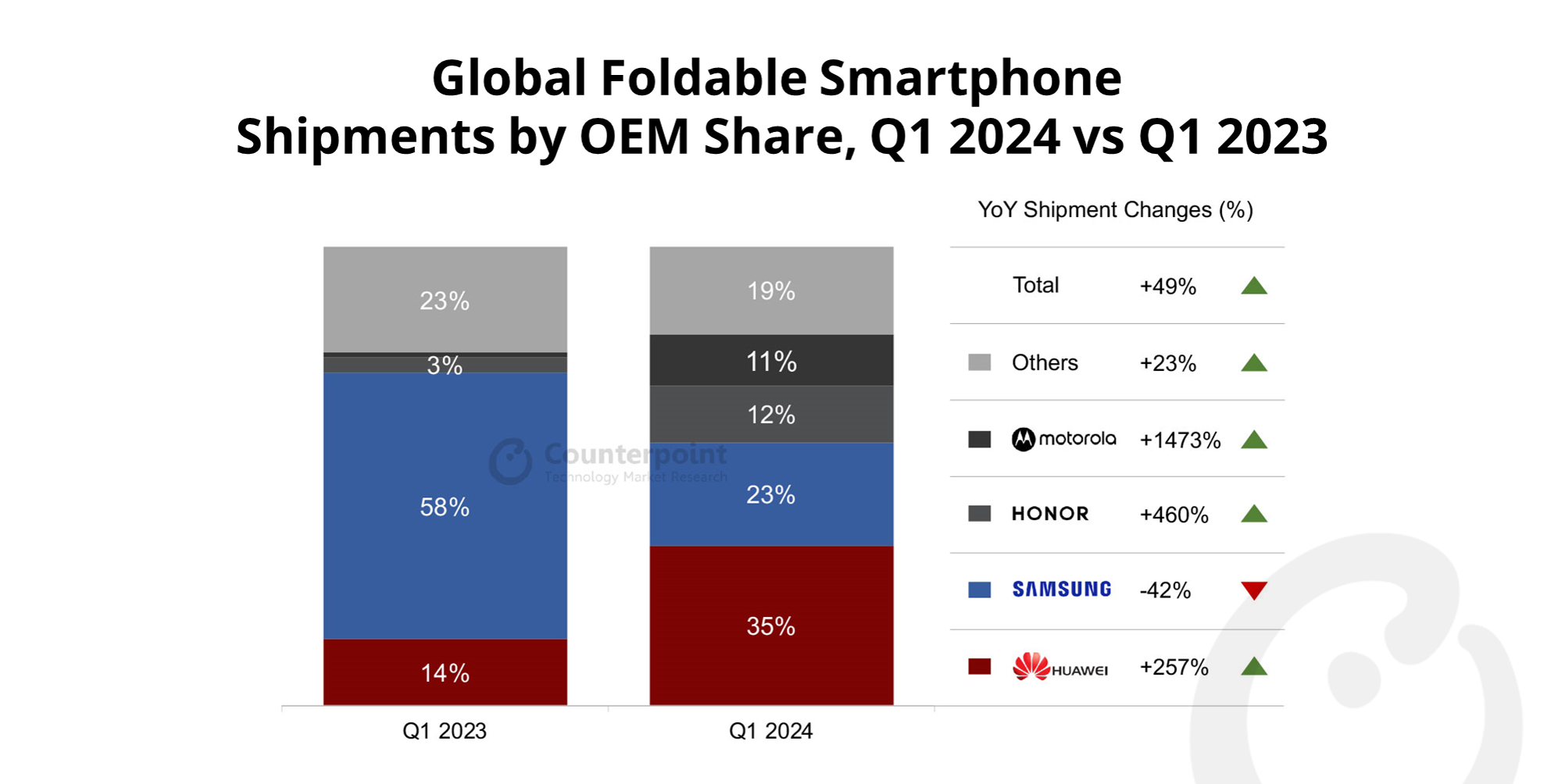- Global cellular IoT module shipments grew 7% YoY in Q1 2024.
- Quectel led the market followed by Fibocom and China Mobile.
- Quectel, Fibocom and China Mobile were the leading module players, collectively holding a 50% market share in Q1 2024.
- For markets excluding China, the top three vendors were Quectel, Telit Cinterion and Fibocom.
Seoul, Beijing, Buenos Aires, Hong Kong, London, New Delhi, San Diego, Taipei, Tokyo – June 24, 2024
Global cellular IoT module shipments grew 7% YoY in Q1 2024, according to Counterpoint’s latest ‘Global Cellular IoT Module and Chipset Tracker by Application’ report. The growth was driven primarily by demand in China and India. The rest of the markets were still facing inventory and demand challenges.
Commenting on the market’s dynamics, Associate Director Mohit Agrawal said, “China and India registered positive growth driven by the good performance of smart meter, POS, asset tracker and router/CPE segments. The market excluding China witnessed a decline of 2% YoY due to low demand and inventory buildup at the customer end. In terms of technology, 4G Cat 1 bis kept its momentum going by capturing one-third of the market. There is a technology transition underway in China with Cat 1 bis gaining share from NB-IoT and Cat 1 due to reduced price differential between Cat 1 bis and NB-IoT.”
Agrawal added, “The demand for cellular IoT in applications such as smart utilities, router/CPE, automotive, and asset tracking remained healthy during the quarter. However, the demand for cellular modules across retail, healthcare and industrial verticals continued to remain subdued.”

- Quectel, Fibocom and China Mobile were the leading module players, collectively holding half of the global market in Q1 2024. In markets excluding China, Telit Cinterion jumped to the second spot, though Quectel remained the leader by a wide margin.
- Fibocom experienced impressive growth in Q1 2024, reaching a new high for a quarterly shipment. Its presence in the router/CPE and telematics segments helped Fibocom enter the top-three list for the international market excluding China.
- China Mobile saw double-digit YoY growth driven by smart meters, asset trackers and POS applications.
- Chinese vendors like Neoway, Lierda and Unionman have grown significantly in some key applications like smart meter, asset tracking and POS.
Commenting on the market outlook, Research Analyst Hanumant Pawar said, “The global cellular IoT module market is expected to partially recover by the second half of this year with normalizing inventory levels following improved demand situation. The IoT module market is expected to rebound completely by 2025, complemented by the widespread adoption of affordable 5G RedCap modules, especially in China. Subsidies from the Chinese government will drive the adoption of 5G in the IoT module market. It is projected that IoT module shipments will grow at a compound annual growth rate (CAGR) of 9% between 2023 and 2030.”
For detailed research, refer to the following reports available for subscribers:
- Global Cellular IoT Module and Chipset Tracker, Q1 2024
- Global Cellular IoT Module and Chipset Tracker by Application, Q1 2024
Counterpoint’s ‘Global Cellular IoT Module and Chipset Tracker by Application, Q1 2024’ tracks 1,500+ IoT module SKUs on a quarterly basis and provides forecasts on shipments, revenues and ASP performances for 80+ IoT module vendors, 12+ chipset players and 18+ IoT applications across 10 major geographies.
Background
Counterpoint Technology Market Research is a global research firm specializing in products in the technology, media and telecom (TMT) industry. It services major technology and financial firms with a mix of monthly reports, customized projects and detailed analyses of the mobile and technology markets. Its key analysts are seasoned experts in the high-tech industry.
Follow Counterpoint Research
press(at)counterpointresearch.com

















